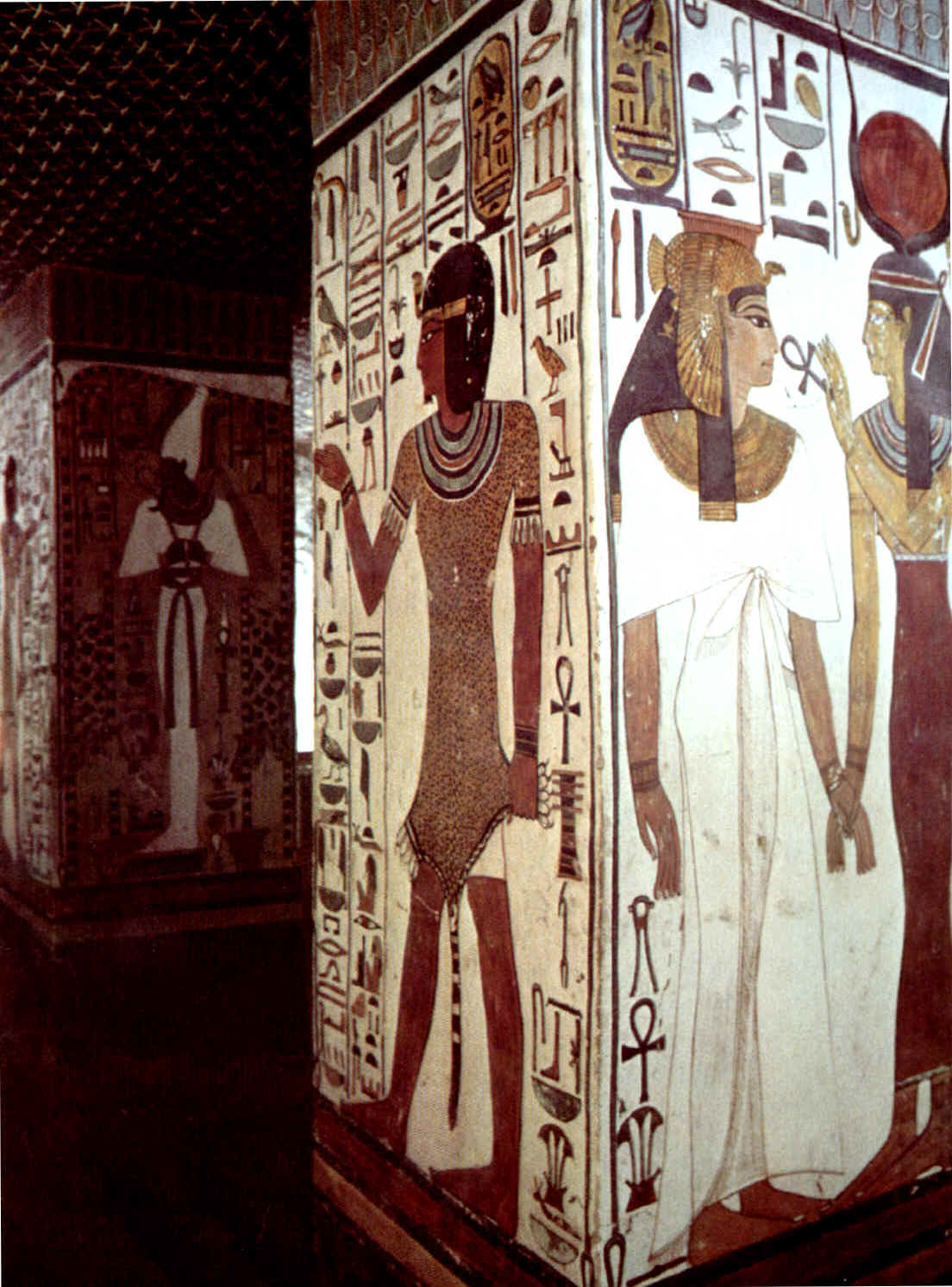|
Mummies

Mummies, and the process of making them, have fascinated both children and adults for centuries.
Why did the ancient Egyptians make mummies?
The ancient Egyptians observed that bodies buried under the desert were dried out and preserved. Based on this observation, they believed that a person's spirit, or soul, lived on after their death.
It was important that the spirit could recognise its body in the afterlife so that it would have somewhere to live.
Preserving the body through mummification was the best solution, but statues of the deceased could provide a back up resting place.
The spirit could eat, play, and enjoy all the things it did during life. Therefore, the Egyptian burial had to provide everything for life in the tomb.
Journey to eternity........
Once the body was mummified and encased in a coffin, sarcophagus, it was placed in a tomb. There were several types of tombs built over the centuries in ancient Egypt.
Inside, the tomb walls were decorated with scenes from life - sports, banquets and everyday activities. These scenes would provide for the deceased in the afterlife. Objects such as food, pots and statues of slaves were also buried in the tomb to serve the dead person in the afterlife.

Above
Tomb painting from the tomb of Nefertari. The painting shows Nefertari with the goddess Isis.
How to make a mummy.....don't try this at home!
Obviously the person must be dead before the process can be started!
Step One. Remove the brain by pulling it out through the nostrils with a long hook.
Step Two. Remove the intestines and other soft organs through a cut in the left hand side of the body. The soft organs are then sterilized and dried and then placed into canopic jars.
Step Three. Wash and sterilize the body.
Step Four. Pack the body with natron (a natural salt) to dry the body out. Leave for forty days
Step Five. After forty days remove the natron and wash the body.
Step Six. Pack the limbs with clay.
Step Seven. Pack the body with linen soaked in resin, myrrh and cinnamon.
Step Eight. Treat the body with ointments and finally wrap in no less than 1000 square yards of fine linen gauze.
This process would have been used for rich people. Poor people usually wrapped their dead in linen and buried them in shallow graves in the desert.
Animal Mummies
The Ancient Egyptians worshipped certain animals as embodiments of the gods. Sacred animals were kept in temples, and after their death were mummified and placed in crypts.
The process of mummifying animals reached its climax in the first few centuries BC. Mummies of cats were placed in cemeteries in Bubastis, Saqqara, Tanis and Thebes, and in Tuna el - Gebel there was a vast burial site for baboons and ibis.
|